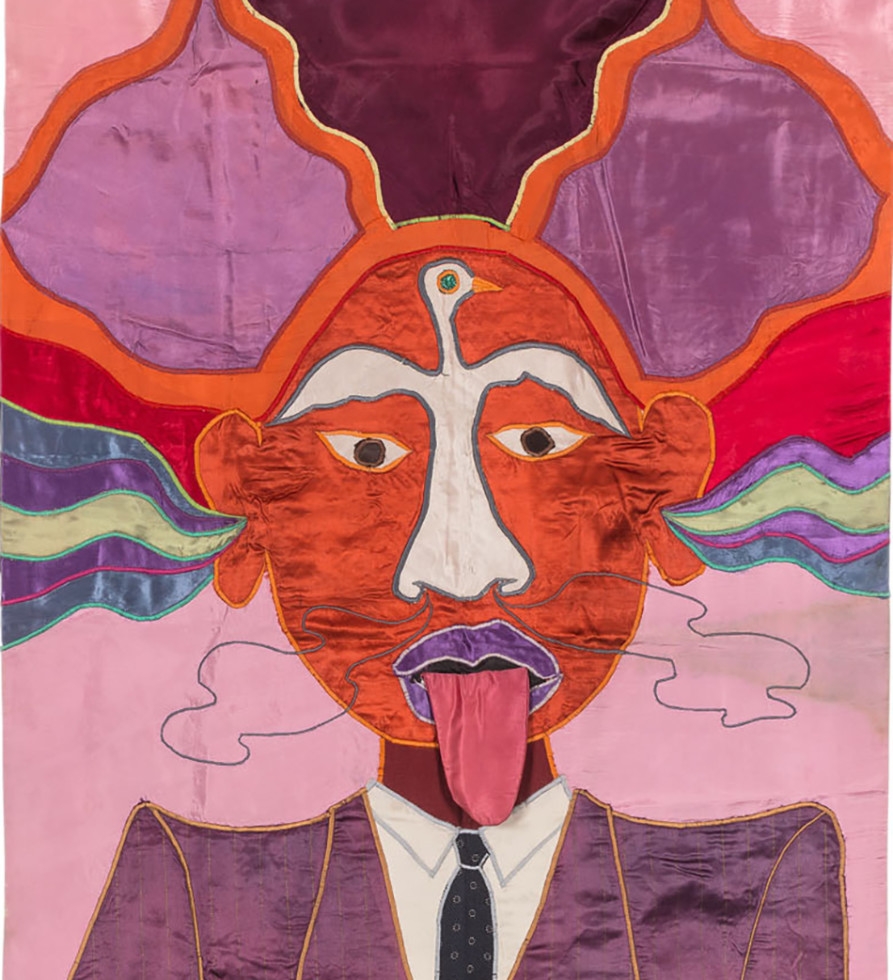Moki Cherry’s art could be incorporated into concerts in Paris, Copenhagen, or the Scanian countryside. By showing her work outside of art galleries and dramatic theaters, and even in her own home, she dissolved the hierarchies that separate public from private and actors from audience. Children—her own as well as others’—served as both audience and collaborative partners.
Moki Cherry was a practicing Buddhist, and in her work she combined influences from Eastern religions and Western art history. Her art was also inspired by extensive traveling and international collaborations. The result is a motley style with naivist features and symbols, populated by human and non-human creatures. Her later work also shows traces of cubism and more abstract forms.
Moki Cherry was born in Koler, Norrbotten County, and moved to Stockholm in 1962 to study fashion. In 1970, she moved with her family to Tågarp in northwestern Scania County, where she converted a former school into a home for the family as well as a gathering place for music, theater, children’s activities, and art. Together with her husband, the musician Don Cherry, she established the Organic Music Society (1966–77), which she saw as the biggest thing to happen to the art scene since the Swedish Ballet (1920–25). From the late 1970s on, she divided her time between Tågarp and New York.
Moki Cherry (1943–2009) had a long history with Moderna Museet. In 1971, she took part with Don Cherry in the exhibition “Utopias and Visions 1871–1981”, where they were given the opportunity to create a total art installation – a living environment in which music, art, and everyday life were allowed to go on together. Moderna Museet in Stockholm showed an exhibition of Moki Cherry’s work in 2016. The exhibition at Moderna Museet Malmö presents a broad picture of her work and even includes a creative workshop.




